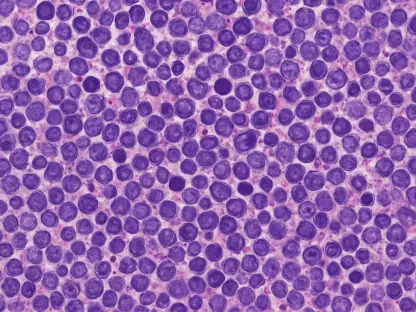In the rapidly evolving landscape of clinical research, remote monitoring has emerged as a paradigm-shifting innovation that promises to overhaul traditional methodologies. This technological advancement facilitates the collection of real-time health data from clinical research participants remotely, eliminating the need for travel to conventional clinical sites. Enabled by cutting-edge digital health technologies, wearable sensors, and telecommunication platforms, remote monitoring represents a fundamental change in how studies are conducted. The impact of remote monitoring was particularly highlighted during the COVID-19 pandemic, underscoring its vast potential alongside its inherent challenges. As healthcare moves towards a more decentralized model, the trend is inclining towards virtual and decentralized clinical trials that make research more inclusive, cost-effective, and broadly representative.
The transition to remote monitoring is driven by its ability to enhance patient accessibility and retention. Traditional clinical research often grapples with geographic barriers that impede participant recruitment and retention, leading to high dropout rates. Remote monitoring addresses these challenges by allowing individuals to participate from the convenience of their homes, significantly expanding the demographic and geographic reach of studies. This method is particularly beneficial for inclusivity, incorporating participants from rural areas, underserved populations, and those with mobility constraints, thus enhancing the validity and generalizability of research outcomes.
Enhancing Accessibility and Retention Through Remote Monitoring
Remote monitoring plays a pivotal role in addressing the accessibility challenges that have long been a barrier in traditional clinical trials. By eliminating the necessity to travel to clinical sites, remote monitoring opens up participation to a broader range of individuals, regardless of their location or mobility constraints. The logistical hurdles often associated with in-person visits can lead to participant fatigue and eventual dropout, but remote monitoring offers a solution by integrating seamlessly into participants’ daily routines. This convenience helps maintain engagement and commitment to trials, which in turn increases the reliability and completeness of the data collected.
Further enhancing retention, remote monitoring allows for the inclusion of individuals from various demographic and geographic backgrounds, often leading to more diverse study populations. In traditional settings, participants from rural or underserved areas, or those with specific physical limitations, might be underrepresented due to the necessity of frequent site visits. Remote monitoring breaks down these barriers by providing an accommodating platform for study involvement. Moreover, this adaptability helps researchers gather data that is more reflective of real-world scenarios, thereby increasing the validity of clinical trial outcomes. As such, remote monitoring supports both a more inclusive participant pool and a more comprehensive understanding of health conditions across diverse populations.
Real-time data collection is another crucial aspect of remote monitoring that significantly enhances traditional research methodologies. This capability facilitates continuous tracking of participants’ health data, contrasting with traditional models that rely on periodic data capture during scheduled visits. Remote methodologies provide an ongoing, real-world depiction of a participant’s health status, enabling early detection of health trends, fluctuations, and anomalies. This continuous data stream is invaluable for enhancing participant safety, as it allows for immediate alerts to sponsors and investigators regarding adverse events or protocol deviations, fostering a more proactive approach to patient safety.
Operational Efficiency and Cost Reduction
The operational efficiency and cost savings associated with remote monitoring have positioned it as a highly valuable tool in the realm of clinical research. By significantly reducing the need for in-person visits, operational costs related to staffing, facilities, and logistics see a substantial decline. This financial efficiency is further compounded by the digitalization of data capture processes, which minimizes the need for manual data entry, streamlines workflows, and improves the overall quality and integrity of the data collected. Automation of tasks traditionally handled manually not only accelerates the timeline of clinical trials but also alleviates administrative burdens, enabling researchers to focus more on the analytical aspects of their work.
Advanced backend functions, such as payer enrollment services, benefit from the automation provided by remote monitoring systems. These systems align clinical trial billing with payer rules, reducing the possibility of billing errors and ensuring compliance with regulatory standards. Digital platforms can embed intelligent rules into billing workflows, which simplifies the management of complex billing procedures. This capability is particularly critical when differentiating between study-related expenses and routine care costs, a common challenge in remote trials. By ensuring precise compliance, these platforms safeguard against compliance-related pitfalls and contribute to the financial sustainability of clinical research endeavors.
In addition to these benefits, remote monitoring supports a more dynamic approach to study design, accommodating adaptations and modifications based on continuous data flow. This real-time flexibility allows for early interventions and optimized trial outcomes, minimizing risks and enhancing operational success. Rather than following rigid procedural paths, researchers can adapt study protocols to unfolding data trends, improving both the relevance and efficiency of trials. This adaptability facilitates customized approaches to each clinical scenario, promoting the development of more precise and effective therapeutic solutions.
Overcoming Limitations and Challenges
Despite the clear advantages, remote monitoring is not without its limitations and challenges, requiring careful consideration and strategic management. One of the primary concerns is the accuracy and reliability of data collected through remote devices. The integrity of remotely captured data largely depends on the accuracy of devices like wearable sensors and mobile applications, yet not all of these tools carry the necessary clinical validation to ensure precision. Variabilities in device performance or user behavior can introduce data discrepancies that may skew study results. Ensuring device reliability necessitates selecting rigorously tested devices, providing comprehensive participant training, and instituting robust quality control protocols to guarantee data accuracy.
Another significant challenge is the potential exclusion of participants who may lack digital literacy, access to essential technologies like smartphones, or stable internet connectivity. This can particularly affect older adults, low-income individuals, and non-English-speaking participants, who might find the technology-intensive requirements daunting. While remote monitoring expands potential participation, it requires measures to ensure equity and accessibility for all. Researchers must consider alternative data collection methods and offer sufficient support services to bridge technology gaps. By instituting flexible and inclusive approaches, researchers can mitigate these barriers, fostering equitable monitoring.
Data security and privacy present additional challenges as confidential health information is collected outside traditional controlled environments. Compliance with privacy regulations is crucial for ensuring secure data processing, demanding clear communication about how data is managed, who accesses it, and what protective measures are enacted. Transparent consent processes, robust cybersecurity infrastructure, and adherence to frameworks like HIPAA and GDPR are essential in maintaining participant trust and data integrity. These elements are imperative for building a solid foundation for remote trial success.
Hybrid Models for Future Research
Rather than supplanting traditional clinical trials entirely, remote monitoring is paving the way for a blended approach, harmonizing conventional site-based research with state-of-the-art digital health tools. Such hybrid models offer a unique convergence of rigorous on-site methodologies with the convenience and adaptability of digital platforms. This integration promises enriched data collection and elevated participant convenience, increasing the likelihood of participant adherence and retention. Researchers can modify study protocols adaptively based on real-time data feedback, enhancing the efficiency, relevance, and responsiveness of clinical trials.
The hybrid model of clinical trials not only bolsters the quality of data collection but also introduces innovative prospects for patient engagement. By integrating elements of remote monitoring with traditional clinical environments, the model maintains the strengths of both methodologies. While rigorous site-based trials offer controlled conditions and thorough oversight, the digital tools augment these trials by capturing a broader spectrum of patient data and offering personalized insights. This comprehensive approach enables more thorough investigational studies while respecting the individual needs and preferences of participants.
Furthermore, as technological advancements continue to refine remote monitoring capabilities, hybrid models will likely evolve, supporting even more flexible and tailor-made research designs. As researchers gain insights into integrating these methodologies effectively, the potential for transformative improvements in trial design, execution, and outcomes will be significant, heralding a new era of more precise, patient-centered research. Such progress holds promise for developing innovative treatments and fostering greater collaboration within the scientific community, ultimately benefiting patients worldwide.
Transforming Clinical Research Landscape
In the ever-changing field of clinical research, remote monitoring has become a groundbreaking innovation, poised to transform traditional methods. This advancement leverages cutting-edge technology to collect real-time health data from participants without requiring travel to clinical sites. Using digital health tools, wearable tech, and telecommunications, remote monitoring marks a significant shift in study execution. During the COVID-19 pandemic, its effectiveness became especially apparent, highlighting its enormous potential and associated challenges. With healthcare moving toward decentralization, there’s a noticeable trend towards virtual and decentralized clinical trials, making research more inclusive, cost-effective, and diverse.
The move to remote monitoring is largely motivated by its potential to improve patient accessibility and engagement. Traditional clinical studies often face barriers due to geography, which can hinder participant recruitment and retention, causing high dropout rates. Remote monitoring simplifies participation, allowing people to be involved from home, increasing the geographical and demographic reach of studies. Particularly beneficial for inclusivity, it involves participants from rural and underserved areas and those with mobility issues, thus strengthening the validity and applicability of research findings. This method not only democratizes access to clinical studies but also enhances data collection, paving the way for more robust and diverse research outcomes.









